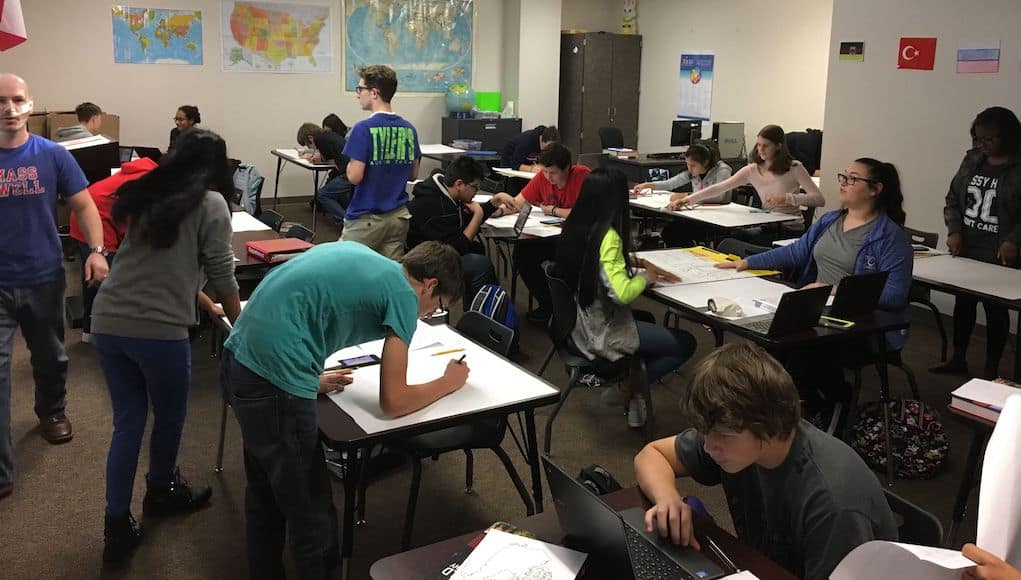Early College: The Little Reform Bundle That Could

Ten years ago I called early college high schools the best philanthropic initiative in education that never scaled. But the idea keeps chugging along gaining steam with policy and practice innovations. It’s now big enough to call the demonstration project a resounding success and expansive enough to provide an attractive and accelerated education option to millions of families.
Launched by a Gates-led funding alliance in 2001, eight partners supported by JFF set out to create 280 high schools where students could earn up to two years of college credit.
The early college hypothesis was three bets:
- An accelerated path to an associate degree would “hook” some kids and increase academic motivation, persistence, and achievement;
- The ability to earn free college credit would be attractive to many low-income families; and
- The opportunity to experience college success in a supportive environment would encourage a higher percentage of low income and minority students to go on to earn a four-year degree.
A new AIR evaluation confirmed what appeared to be the case ten years ago—the initiative worked. Many students and families found the proposition attractive, more students graduated from high school all with some college credit, and more finished a four-year degree. It’s worth noting that the AIR study, unlike most evaluations was a randomized controlled trial that demonstrates causation.
The second important observation is that a decade after the Gates funding ended, the initiative has probably doubled in size and seems to be poised for growth.
Early College Backstory
The initiative had three inspirations. First was a 2001 phone call to the Gates team from Bard College President Leon Botstein requesting a $1 million grant for an idea he called early college.
That same week, Utah Governor Mike Levitt called with an idea for six early college high schools. Leavitt (who went on to become HHS Secretary) was a visionary governor. Competency-based Western Governor’s University was also his idea.
The third inspiration was a bus ride with Cece Cunningham from LaGuardia Community College, part of the Ford funded Middle College consortium. Cunningham had a hunch that the little network of existing concurrent enrollment high schools on college campuses could push all the way to associate degrees with high school diplomas.
Three visionaries with the same idea in the same week seemed to suggest the radical proposition might just work. With help from JFF, eight regional intermediaries were quickly assembled and the $100 million national early college high school (ECHS) initiative was launched.
The following year, a meeting with then-Texas Governor Rick Perry resulted in the formation of the Texas High School Project (now Educate Texas), a $30 million public-private partnership that resulted in 135 early college and STEM schools (probably the most productive state-based philanthropic partnership in modern history). The initiative led to the best legislation in the country clarifying credit transfer and funding. Today there are about 200 schools designated as Early College in Texas.
Promising Variations
With support from IBM, a P-TECH opened in Brooklyn in 2011. It infused work experiences and employment opportunities to the early college model. The P-TECH model has now grown to more than one hundred schools across eight states—including sixty-three in Texas (in addition to the early colleges). There are eighteen P-TECH in Dallas supported by seventy-five business partners. With seven more early colleges, the accelerated pathways are available as a school-within-a-school option in almost every high school attendance area.
Purdue Polytechnic High School in Indianapolis, a charter school sponsored by Purdue University, offers a project-based concurrent enrollment model that offers accelerated entrance into a top engineering school. Purdue Poly will become a managed charter network extending the proposition statewide.
What We Can Conclude From the ECHS Initiative
There are seven observations we can learn from the ECHS:
1. Proposition. The best high schools offer their students a unique proposition with integrated systems, structures, and supports to back it up, not a random assortment of courses. The ECHS initiative is a great example (so are the other seventy-five networks we featured in Better Together).
2. Challenge. The ECHS model is a particularly challenging construct, both academically and politically. It’s really hard and time-consuming to work across the postsecondary boundary beginning with the fiscal duel: colleges don’t like giving up lower division tuition and high schools don’t like sharing revenue with colleges. In states without clarifying legislation, almost every early college is a custom bargain on credits and funding. Boundary breaking innovations like early college take a champion like Leavitt and Perry and lots of technical assistance.
3. Subsidy. Growth has been most rapid in states like Texas that pay both the high school and community college. While this double payment for dual credits seems expensive a UT study suggests that it is at least partially recoupled through acceleration and reduced cost per completer.
4. Traditional. With a few exceptions, ECHS instruction, in both high school and college classes, tends to be quite traditional. The pressure to get students into and through college credit courses seems to reduce the amount of student-centered and project-based learning. It’s frustrating that, given the goal of doing six years of work in four, that there isn’t more competency-based innovation other than awarding dual credit but this does reflect, however, the cross-institutional nature of most early college high schools. (Perhaps one should not expect lighting to strike at the boundary between two tradition-bound sectors.)
5. Quality. Most early college high schools combine college certified instructors in the high school and courses taken on a community college campus. The college-in-the-high-school courses appear to be of comparable quality to the community college classes. The former offer convenience, the latter offer the benefit of experiencing success in what’s next.
6. Option. Because ECHS is a challenging and often traditional academic program, it’s not for everyone. It may not be the best preparation for the most selective colleges and may lead to some undermatch. It may not be the best path for some technical careers (where there is not an ECHS path). It’s a real stretch for students coming out of a low performing K–8 pathway. And, it’s not typically a student-centered pathway for students seeking an alternative to content-based approach. As a result, it is best offered (as Dallas does) as an option in each high school attendance area.
7. Time. Some educational initiatives, especially developing and spreading new high school models, take longer to develop and catch on than expected. Almost two decades in, ECHS and P-TECH seem to be poised to scale especially in states that reduce the boundary friction with enabling legislation and financial support.
It’s hard to change the basic structures in public education and even harder to work across the postsecondary boundary, but early college has proven to be more than an interesting demonstration project, it’s the little engine that could. It’s chugging along gaining steam. It’s not a universal reform but it is an option that should be available to every family.
For more, see:
- Navigating Early College and Dual Credit Alternatives
- Simon’s Rock Early College: Three GenDIY Women Paving Their Own Path
- Lessons from Leading a Career-Focused Early College Flex High School
Stay in-the-know with innovations in learning by signing up for the weekly Smart Update.
This blog was originally published on Flypaper, The Thomas B. Fordham Institute’s blog.








0 Comments
Leave a Comment
Your email address will not be published. All fields are required.